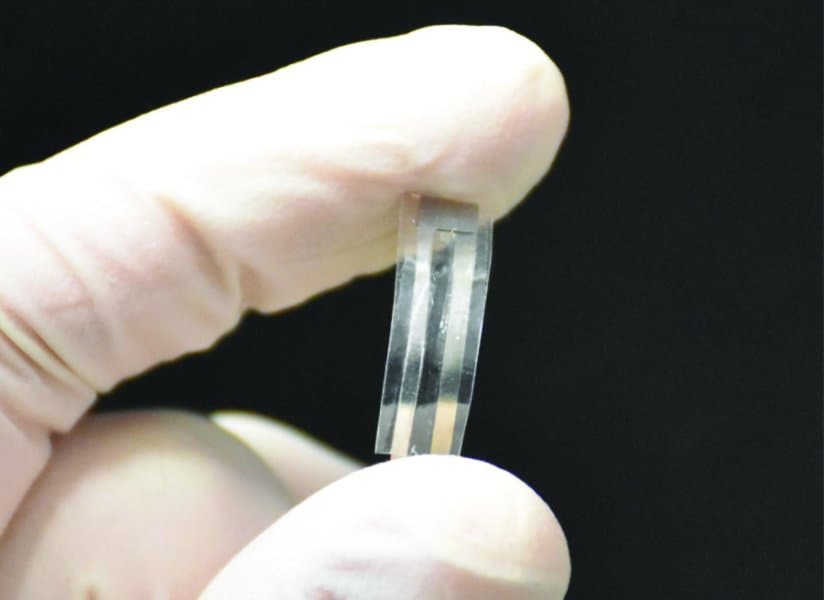
Fully biodegradable sensor offers safer way to monitor lung and brain conditions
pharmafile | January 17, 2018 | News story | Research and Development | biodegradable sensor, pharma, university of connecticut
Engineers at the University of Connecticut have developed a biodegradable pressure sensor which is designed to, once ingested, aid in the detection and monitoring of chronic lung conditions, swelling of the brain and other conditions. Once it has served its purpose, the sensor, which is made from medically safe materials approved by the US FDA, then dissolves harmlessly in the patient’s body.
Currently, implantable sensors in use often contain potentially toxic components and must be removed from the body after use via an invasive procedure, which not only is inconvenient for the patient, but can increase healing time and raise the risk of infection. When implanted in the back of a mouse, only minor inflammation was observed, with tissue returning to normal after four weeks.
The sensor comprises two layers of piezoelectric poly(L-lactide) (PLLA) film between molybdenum electrodes, contained within layers of biodegradable polylactic acid (PLA). When pressure is applied to the piezoelectric PLLA film, it emits an electric charge which can be captured and transmitted to a device which can provide usable readers to be interpreted by medical professionals. Because of the way it works, researchers believe it could also be used to provide electrical stimulation for tissue regeneration, and could also have applications in monitoring glaucoma, heart disease and bladder cancer.
“We are very excited because this is the first time these biocompatible materials have been used in this way,” explained Thanh Duc Nguyen, senior author of the paper and an Assistant Professor of Mechanical and Biomedical Engineering in the Institute of Regenerative Engineering at UConn Health and the Institute of Materials Science at the Storrs campus. “Medical sensors are often implanted directly into soft tissues and organs. Taking them out can cause additional damage. We knew that if we could develop a sensor that didn’t require surgery to take it out, that would be really significant.”
A prototype of the sensor has been created which measures just five millimetres long and wide, and just 200 micrometres thick, made of thin polymer film. The prototype was employed to monitor the respiratory rate of a mouse, implanted in the animal’s abdomen and hardwired to a signal amplifier outside of its body. When the signal was transmitted to an oscilloscope, it produced reliable readings of contractions in the mouse’s diaphragm for four days before dissolving. According to the researchers, the readings were on par with existing commercial devices.
The team is now exploring how to extend the device’s functional lifetime, with an end goal of utilising it in human patients.
Matt Fellows
Related Content

FDA approves IMIDEX’s AI-powered device VisiRad XR
The technological pharmaceutical company IMIDEX has been granted clearance from the US Food and Drug …

Artiva Biotherapeutics announces FDA clearance of IND for AlloNK and Rituximab combo
On 16 August 2023, the US Food and Drug Administration (FDA) officially cleared Artiva Biotherapeutics’ …

Novartis acquires Chinook Therapeutics for $3.5bn
Swiss pharmaceutical company Novartis has entered into an agreement and plan of merger with US-based …








